This summer marks the 10th anniversary of the AF Rayspeed RB cylinder kit. Seen as the successor to the popular TS1, it has proven to be a worthy winner during its 10 year tenure. We now look back at how the kit performed during that time from the early teething problems to recent record-breaking performances.
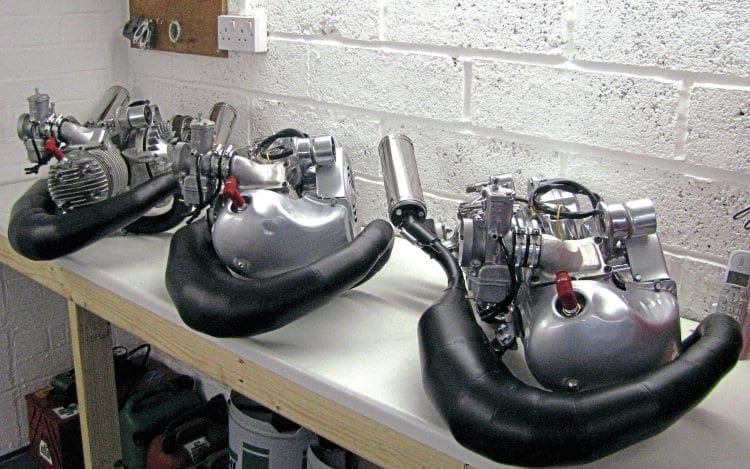
Only by chance did it happen
By 2005 the TS1 kit had been around for 20 years and by this time had not only proved to be fast and reliable but also the biggest selling Lambretta performance kit to date. Not just in the UK, worldwide many thousands of Lambretta riders were benefiting from its unique qualities. In all honesty the TS1 didn’t need improving but at the same time with the completion in the performance market hotting up Ray Kemp knew he needed to find a replacement to stay one step ahead of his rivals. Originally Terry Shepherd the two stroke genius and designer of the TS1 was given the job of upgrading it. Several plans were drawn up and then given to Gilardoni the kits manufacturer to assess how it could be done. Ray and Ben Kemp had travelled to the international motorcycle show in Milan to meet up with Gilardoni for talks when by chance they came across the Airsal stand. Airsal specialise in two-stroke cylinder production and after looking at the TS1 they were confident that they could change the existing four petal reed valve like on a TS1 to an eight petal one on a brand new cylinder design. Not only that but they were convinced that they could produce 20% more power, a staggering claim.
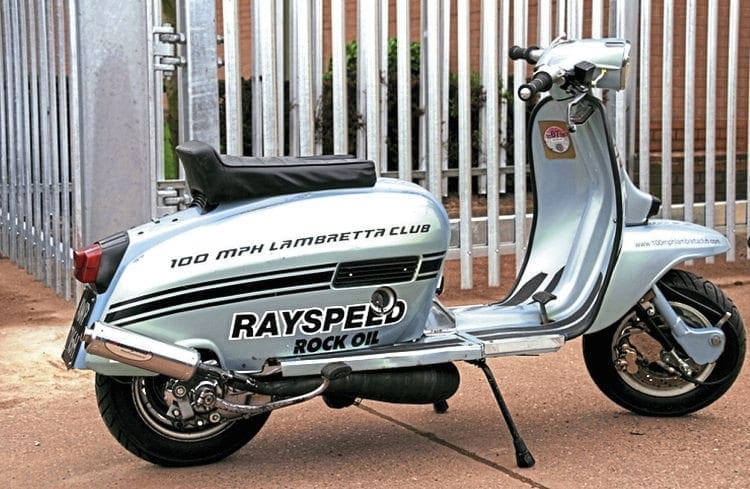
Ray and Ben were soon convinced and left Airsal with the challenge of producing a prototype, not only with the promised performance but also a guarantee that it would fit in a Lambretta frame without any modification. This would take time and from late 2005 it would be almost two years before it would go in to production. In the intervening time the rumour mill surrounding the new kit would go in to overdrive. Originally given the label of the TS2 many speculated not only in its design but also of its performance. It was obvious that it would have more power than the TS1 otherwise why bother and talk soon grew that the kit would have enough power to produce a genuine 100mph Lambretta.

Ray and Ben both kept the kit’s design a closely guarded secret with the occasional update including a spoof video of a police car attempting to catch Ray as he blasted down the road outside the shop on an allegedly RB kitted Lambretta. By early 2007 the kit had undergone significant testing and it was announced that its release would be some time in the summer of 2007. With all the hype in the buildup pre-orders were steadily increasing for those waiting in anticipation of the kit’s impending launch. The question now was could it deliver the performance that those purchasing it craved and expected.
Off to a bad start
In August of 2007 the RB 22, a 225cc version, went on general sale to the public only to be recalled instantly due to a manufacturing fault. The left hand side top cylinder stud hole had broken through on to one of the feed ports. Though technically it would be sealed off when the kit was bolted down there was the potential for an air leak if this was not 100% secure. Ray quickly came up with a solution by fitting a small sleeve to seal it off but the 50 or so kits that had been sent out needed to be recalled to have the modification carried out. In later production more material was cast around this area to prevent it from happening again.
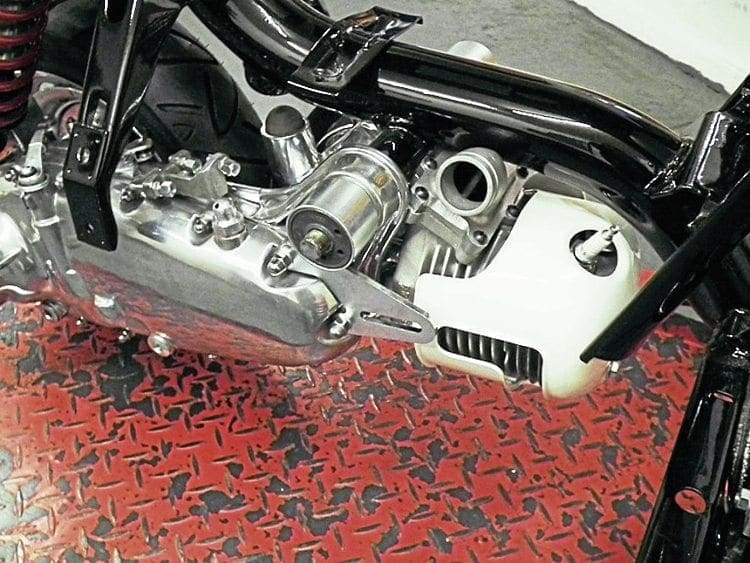
Apart from that everything else was fine as new owners and tuners alike pored over the kit’s exciting new features. It offered a V-shaped eight petal reed block with two extra boost ports to increase gas flow in to the cylinder. This was complemented and aided by bigger transfers and transfer area in to the cylinder. Finally the exhaust port was slightly smaller but now had two smaller extra ports either side. Both ports were bridged to alleviate the strain on the rings and this did create concern among some tuners. During the past many two-stroke manufacturers had used the bridged exhaust design with varying degrees of success because though the idea was to support the piston ring tension it could be liable to crack and was seen as a potential weak point. The other problem was the kit would use the existing Asso piston as fitted in the TS1 kit. With both rings being 1.5mm wide this lead to the theory that indeed there would be too much tension on the bridges, causing them to fail.
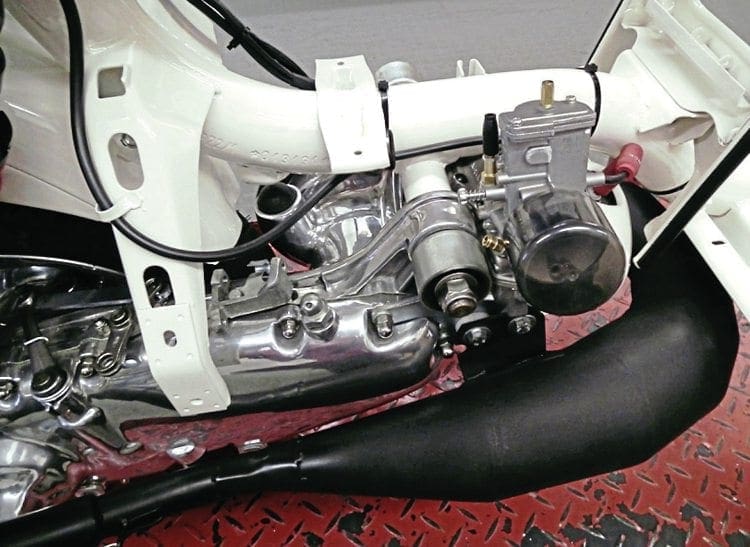
Whatever concerns there were this didn’t deter Lambretta owners from purchasing as sales initially surged. One of the kit’s unique designs was in fact the angle of the exhaust manifold. Up till now all Lambretta exhaust manifolds had been flat but on the RB this was at a 45° angle, meaning there was no expansion pipe available to fit.
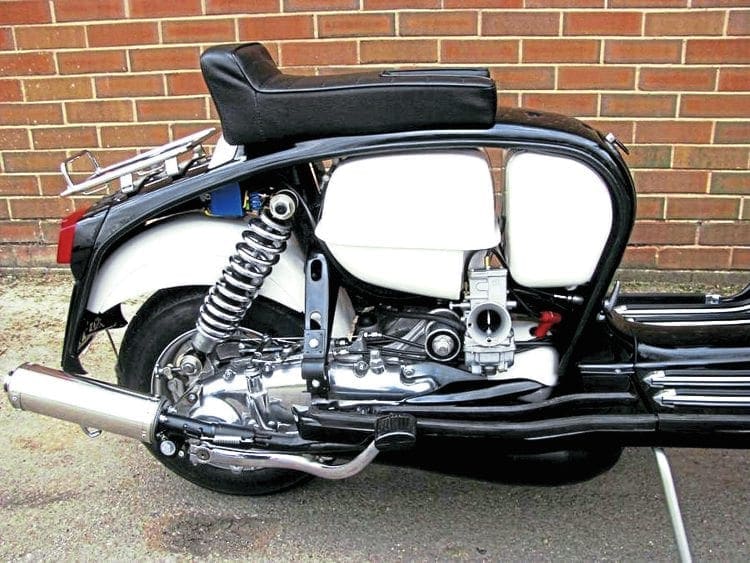
AF Rayspeed had one built specifically from their NK range but this meant it was the only choice to start with. If the kit’s sales continued as strongly there was no doubt other manufacturers would jump on the bandwagon to create their own pipe to cash in on a new market.
The race is on
Initial tests showed two prominent points of the kit’s potential. Out of the box it produced over 25bhp and had a great power spread. This meant that not only would acceleration be greatly improved but also the potential to fit much taller or longer gearing allowing much higher cruising speeds. This was duly proved by fitting a TV 200 gearbox with standard sprockets to a demonstration bike not only pulling the extremely tall gearing but reaching a speed downhill of over 90mph. Though some potential purchasers were disappointed that 100mph was not achieved (it was never going to be) it proved that in the summer of 2007 this was the most powerful off the shelf Lambretta kit available anywhere in the world. Ray Kemp had been exact in his statement that this kit would take the potential of the Lambretta casing as we know it to the maximum.
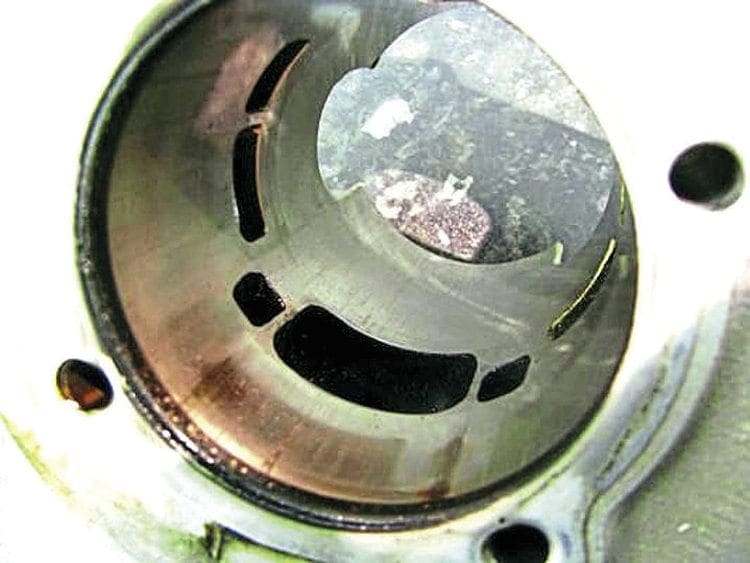
The problem though was in an instant a customer could purchase a kit and with no extra modifications (blending the transfers aside) to the casing potentially have a 90mph Lambretta. All this power was great to have but what about the rest of the engine that now had to take up the strain? The crankshaft, transmission, clutch, gearbox etc. all needed upgrading. Not only was the race on to develop a new exhaust system but also the other components capable of withstanding the increased bhp. If a corner was cut the power would find it as the weak link resulting in failure. This gave the kit a bad reputation from certain sceptics, even though the breakdown had occurred elsewhere in the engine.
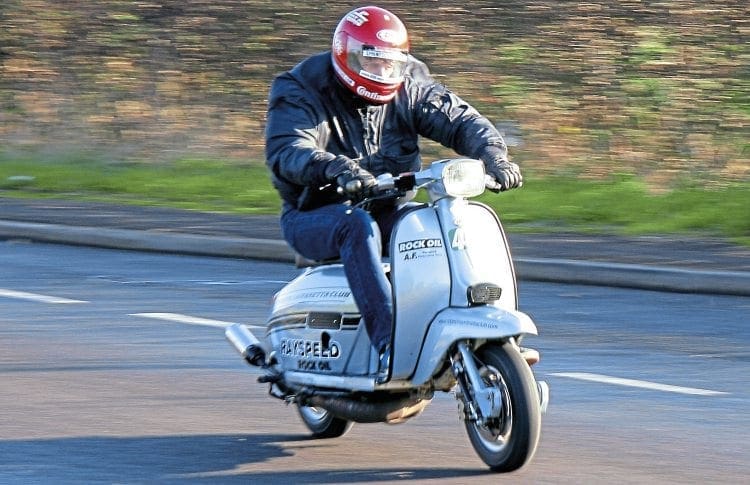
However, a problem with reliability did soon arise in the area that most were worried about — that of the exhaust port. Some kits had suffered extreme wear over the bridges and exhaust port, creating a step where it had worn on the cylinder surface. This was no doubt due to the design of the piston and a solution was needed quickly if the kit’s reputation was to stay intact. Ray Kemp calmly sought the answer from Asso the piston manufacturer who soon enough produced a new piston with much lighter 1mm rings. This proved to be the solution and to this date the kit has performed admirably without any issues.

A year or so after the kit’s launch and with all of the early teething troubles now out of the way a 250cc option was introduced quickly followed by a 200cc version which was made specifically for the small block casing. This now meant a customer had a greater choice and allowed someone with a 125 casing to purchase without replacing the engine. Though the small block version didn’t quite have the same power it was still very respectable. AF Rayspeed had now done what they had promised and it was inevitable that some of the higher profile Lambretta tuners would see extra potential from the kit and modify it to create even more power. The same had happened with the TS1 in years gone by and it was to be expected, but just how far could it be taken?
Power almighty
With some significant development among the exhaust manufacturers the real potential of the RB kit was soon unleashed. With the right pipe and correct set up 30bhp was soon achieved. To think this was simply done by a bolt on kit with no extra work needed to the casings would have seemed unthinkable even just a couple of years earlier. As one tuner creates more power the next one wants to better it so within four years of the kit’s release 35bhp was the norm. With heavy development and reworked casings 45bhp has now been squeezed out of an RB cylinder and there is possibly scope for more.
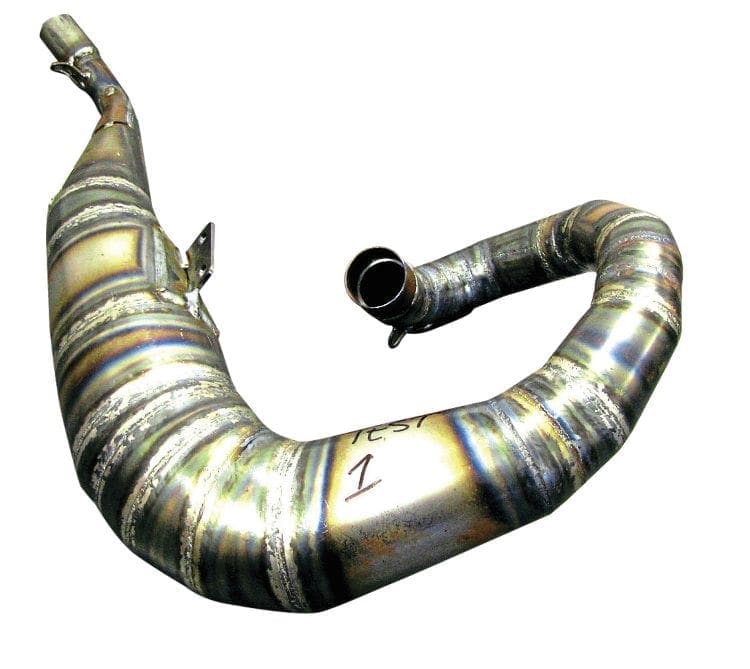
As with the TS1 in the 1980s, a tuning revolution has been created in the Lambretta world. The RB has done it in a different way though. Firstly the power created now has required many engine components to be reworked or developed. When Ray Kemp stated the RB was taking the Lambretta engine casings to their maximum potential, he should have said it was taking the Lambretta in general to its potential. Now it’s not just a case of engine components that are significantly upgraded but also the braking systems, wheels and hubs and just about anything connected to the chassis. Secondly any manufacturer creating a new kit needs it to be in excess of 30bhp power output otherwise it is not worth doing. That is exactly what has happened as some of the new kits coming on to the market are way ahead in performance than any of us thought possible. There is no doubt that the RB kit has been the catalyst in all of this.
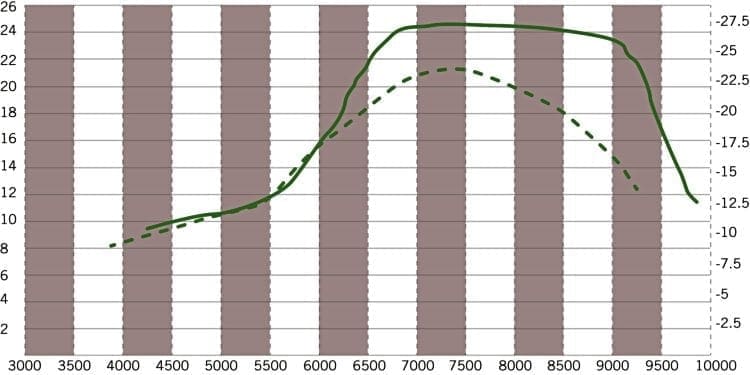
I’m pretty sure that when Ray Kemp decided to upgrade the TS1 he knew it would be a difficult task to produce another kit as successful. In the RB he has once again proved that is possible to improve on something that was already perfection in most people’s eyes.
I wonder what he will think of next.
ERIC COPE
 Eric Cope along with tuner Darrell Taylor has spent the last eight years developing the potential of the RB kit. They currently use a 250cc version that is producing a staggering 45bhp albeit heavily modified. This culminated in Eric being the first person to achieve a sub 13 second 1/4 mile on a full bodied Lambretta, a feat only equalled by a few full blown sprinters. Eric’s hest ever time has been 12.81 seconds at a terminal speed of 102mph. Eric is quoted as saying: “Not only is it the most powerful kit to tune but by far the easiest in terms of the work required to the cylinder, definitely the best on the market.”
Eric Cope along with tuner Darrell Taylor has spent the last eight years developing the potential of the RB kit. They currently use a 250cc version that is producing a staggering 45bhp albeit heavily modified. This culminated in Eric being the first person to achieve a sub 13 second 1/4 mile on a full bodied Lambretta, a feat only equalled by a few full blown sprinters. Eric’s hest ever time has been 12.81 seconds at a terminal speed of 102mph. Eric is quoted as saying: “Not only is it the most powerful kit to tune but by far the easiest in terms of the work required to the cylinder, definitely the best on the market.”
MARTIN MURRAY
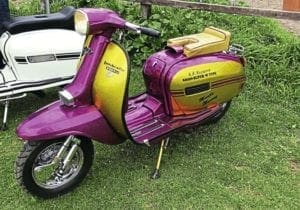 Martin Murray was the first person to order an RB ‘S TYPE’ from AF Rayspeed. It was finished off in gold and purple metal flake and arrived just in time to make its debut at the Isle of Wight scooter rally in 2007. Martin who was no stranger to owning tuned Lambrettas was impressed by the kit’s initial performance. Though he had similar power from other Lambretta engines he noted that they needed significant work to get the same type of performance.
Martin Murray was the first person to order an RB ‘S TYPE’ from AF Rayspeed. It was finished off in gold and purple metal flake and arrived just in time to make its debut at the Isle of Wight scooter rally in 2007. Martin who was no stranger to owning tuned Lambrettas was impressed by the kit’s initial performance. Though he had similar power from other Lambretta engines he noted that they needed significant work to get the same type of performance.
He also found that it was very tractable at low revs making it ideal to drive around town but also ideal for fast motorway use and good for overtaking when above 70mph. Martin did have a few niggles with the set up but once sorted has found the engine to be very reliable. In his own words “the RB is the best value kit on the market for the Lambretta and has taken over from where the TS1 left off”.
ANDY FRANCIS
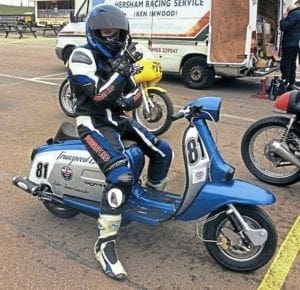 Andy Francis saw the development of the RB first hand having spent a lot of time at AF Rayspeed during the testing period. Having seen various stages of the kit’s progress he didn’t think the finished product would be that special. Once he saw Ray Kemp testing on the A64 outside the shop he knew in an instant that he had guessed this one wrong. Watching its performance Andy knew this was about to take Lambretta tuning as we know it to the next level. He was convinced that this would push other manufacturers of kits to produce more power as they attempted to step up to the new benchmark set by AF Rayspeed.
Andy Francis saw the development of the RB first hand having spent a lot of time at AF Rayspeed during the testing period. Having seen various stages of the kit’s progress he didn’t think the finished product would be that special. Once he saw Ray Kemp testing on the A64 outside the shop he knew in an instant that he had guessed this one wrong. Watching its performance Andy knew this was about to take Lambretta tuning as we know it to the next level. He was convinced that this would push other manufacturers of kits to produce more power as they attempted to step up to the new benchmark set by AF Rayspeed.
Both Ray and Ben Kemp were worried that they would not be able to keep up with demand for exhausts because of the kit’s unique design. To help the situation they gave Andy a kit with the sole intention of developing a new exhaust system to cater for customers’ exacting needs. Not only did Andy fulfil their wishes but in the RB race unleashed the kit’s potential. Both the RB Race and RB Supertourer
Words & Photographs: Stu Owen



